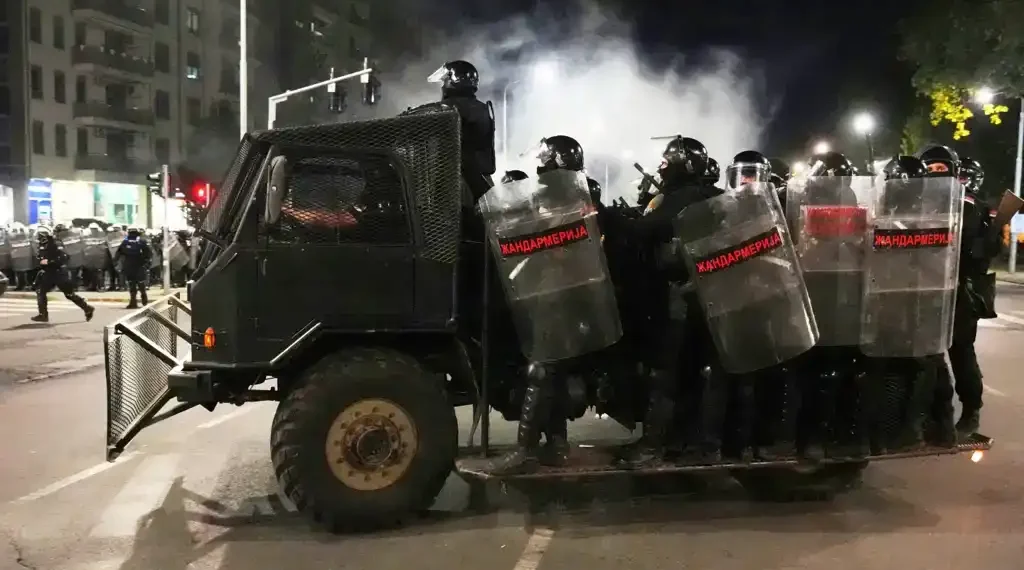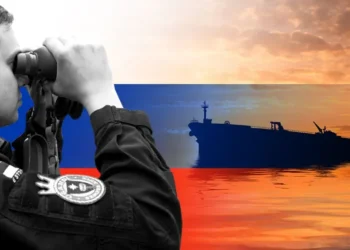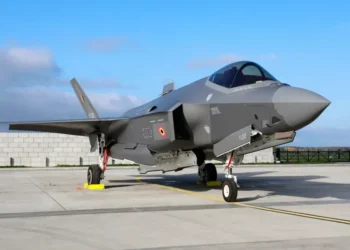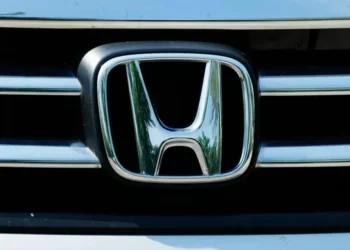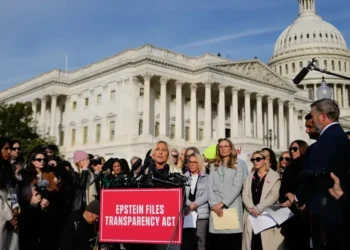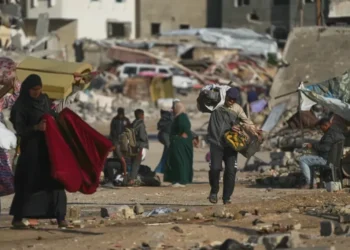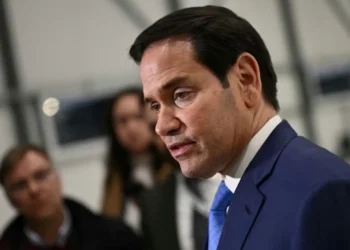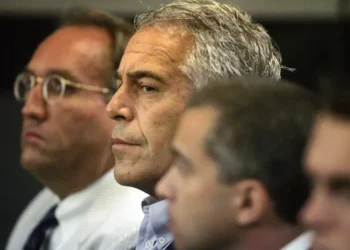Serbia Protests Escalate as Valjevo and Belgrade Clashes With Police Intensify Amid Anger Over Government Accountability and Corruption
Published Time: 08-17-2025, 14:30
Serbia is facing its most intense wave of protests in years as demonstrators clashed with police in several cities, setting fire to party offices and accusing authorities of brutality. The unrest, which began as student-led demonstrations, has now escalated into violent confrontations that are testing the government of President Aleksandar Vučić.
Growing Anger in Valjevo and Beyond
On Saturday, protests in the western town of Valjevo, about 60 miles (100 kilometers) from Belgrade, turned violent after demonstrators attacked the offices of the ruling Serbian Progressive Party (SNS). According to the Associated Press, groups of mostly young protesters, many with scarves covering their faces, hurled flares into the building, setting it on fire before confronting riot police in the town center.
Police responded with multiple rounds of tear gas and charged at the demonstrators, who retaliated by throwing bottles, stones, and additional flares. The clashes left at least one officer injured, Interior Minister Ivica Dačić confirmed, adding that 18 people were detained during the unrest.
“The law will be enforced. All those who engaged in violent acts will face arrest,” Dačić said, noting that Valjevo’s municipal building, court, and prosecutor’s office also sustained significant damage.
Similar confrontations were reported in Belgrade and in the northern city of Novi Sad, where protesters clashed with police, ignited garbage containers, and accused authorities of using excessive force.
Background: A Nation on Edge
Serbia has been gripped by demonstrations since November, when the collapse of a train station canopy killed 16 people. The tragedy sparked nationwide outrage, with many citizens blaming poor construction standards and corruption in infrastructure projects.
Initially peaceful and largely student-led, the protests demanded government accountability and higher safety standards. But the movement turned violent in recent days after footage circulated on social media showing police officers beating a young protester in Valjevo, kicking him and striking him with batons during an earlier rally.
The video fueled anger and drew thousands to Saturday’s protest in Valjevo, which began peacefully but escalated after flares were thrown at the SNS offices.
Escalating Tensions With the Government
President Aleksandar Vučić has rejected protesters’ calls for early parliamentary elections, accusing the movement of being influenced by foreign powers seeking to “destroy Serbia.” He has pledged a firm crackdown, further inflaming tensions with demonstrators who accuse his administration of authoritarianism.
Clashes between anti-government protesters, ruling party loyalists, and police have now erupted nightly for nearly a week. According to local media, dozens of people have been injured and scores detained since Wednesday, when demonstrators in Novi Sad demolished another SNS headquarters.
The confrontations have amplified concerns about Serbia’s political stability, with critics accusing Vučić of consolidating power, limiting press freedom, and enabling corruption. Vučić has consistently denied these allegations.
International Reactions
The growing unrest has drawn the attention of European institutions. Alain Berset, Secretary General of the Council of Europe, urged both protesters and authorities to show restraint.
“Serbian authorities must uphold Council of Europe standards, ensuring calm and respect for the right to peaceful assembly,” Berset said in a statement posted on X.
Serbia, a formal candidate for European Union membership, has long faced criticism over democratic backsliding. While seeking integration with the EU, Vučić has also maintained close ties with Russia and China, raising concerns among Western partners about Serbia’s geopolitical direction.
Police Deny Brutality Allegations
Despite viral videos showing violent encounters, Serbian police have rejected accusations of systemic brutality. Authorities say officers have been repeatedly attacked by demonstrators and that dozens of policemen have sustained injuries during the clashes.
Interior Minister Dačić emphasized that law enforcement’s priority is maintaining public order, not suppressing peaceful assembly. He argued that the majority of protesters have gathered lawfully but that “violent groups” within the movement are responsible for escalating confrontations.
The Role of Students and Civil Society
What began as a student-led movement has now evolved into a broader expression of public frustration. Many demonstrators view the protests as a response to years of declining democratic standards and insufficient government accountability. Civil society organizations in Belgrade have condemned the violence on both sides, urging dialogue between the government and protest leaders.
Observers note that the demonstrations represent one of the largest challenges to Vučić’s presidency in recent years, echoing earlier anti-government protests that criticized corruption and press restrictions.
A Cycle of Escalation
The destruction of SNS offices in both Valjevo and Novi Sad underscores a dangerous cycle: protesters escalate their tactics, police respond with force, and further public anger spreads through social media. Analysts warn that unless the government and opposition engage in meaningful dialogue, the unrest could deepen, further destabilizing Serbia’s path toward EU integration.
For many citizens, the protests symbolize a broader struggle over the country’s democratic future. “People are tired of corruption and broken promises,” one Belgrade student protester told independent Serbian media. “We want a government that listens to us, not one that beats us.”
Looking Ahead
As the situation unfolds, Serbia stands at a crossroads. The government’s refusal to call early elections has hardened opposition resolve, while the violent turn of protests risks eroding public sympathy. International actors, particularly the EU and the Council of Europe, are likely to play a role in mediating tensions if clashes continue.
Whether the crisis results in reforms, deeper polarization, or harsher crackdowns remains uncertain. For now, Serbia remains caught in a volatile standoff between citizens demanding accountability and a government determined to maintain control.
This article was rewritten by JournosNews.com based on verified reporting from trusted sources. The content has been independently reviewed, fact-checked, and edited for accuracy, neutrality, tone, and global readability in accordance with Google News and AdSense standards.
All opinions, quotes, or statements from contributors, experts, or sourced organizations do not necessarily reflect the views of JournosNews.com. JournosNews.com maintains full editorial independence from any external funders, sponsors, or organizations.
Stay informed with JournosNews.com — your trusted source for verified global reporting and in-depth analysis. Follow us on Google News, BlueSky, and X for real-time updates.
